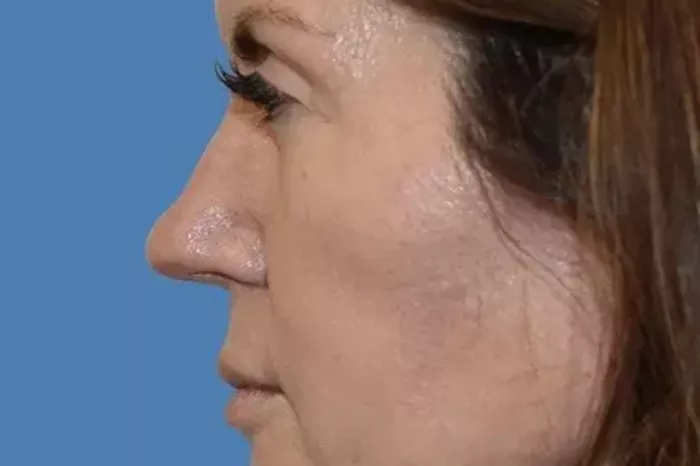Septorhinoplasty is a complex surgical procedure that combines the correction of a deviated septum (septoplasty) with the aesthetic reshaping of the nose (rhinoplasty). This dual-purpose surgery can significantly improve both nasal function and appearance, making it a sought-after option for many individuals. However, the cost of septorhinoplasty can be a major concern, especially when considering the role of insurance. This article delves into the various factors influencing the cost of septorhinoplasty and the extent to which insurance may cover these expenses.
What is Septorhinoplasty?
The Purpose of Septorhinoplasty
Septorhinoplasty is performed for both functional and cosmetic reasons. The septoplasty component addresses a deviated septum, which can cause breathing difficulties, chronic sinus infections, and sleep apnea. Rhinoplasty, on the other hand, aims to enhance the nose’s appearance, correcting issues such as a hump, a drooping tip, or asymmetry.
The Procedure
The surgery involves intricate work on the nasal bones and cartilage to achieve the desired functional and aesthetic outcomes. It is typically performed under general anesthesia and can take several hours, depending on the complexity of the case.
Factors Affecting the Cost of Septorhinoplasty
Surgeon’s Expertise
The experience and reputation of the surgeon play a significant role in determining the cost. Surgeons with extensive experience and a high success rate may charge more for their services.
Geographic Location
The cost of septorhinoplasty can vary widely based on the location of the surgical facility. Major metropolitan areas with higher costs of living generally have higher surgical fees compared to rural areas.
Facility Fees
The type of facility where the surgery is performed also impacts the cost. Accredited surgical centers or hospitals may charge higher fees compared to outpatient clinics.
Anesthesia Fees
The type and duration of anesthesia required for septorhinoplasty contribute to the overall cost. General anesthesia is more expensive than local anesthesia with sedation.
Complexity of the Procedure
The complexity of the surgery itself affects the cost. More extensive corrections, such as those involving both the septum and major cosmetic changes, will be more expensive than simpler procedures.
See also: What Are The Different Types Of Rhinoplasty?
The Role of Insurance in Septorhinoplasty
Coverage for Functional Aspects
Insurance companies are more likely to cover the functional aspects of septorhinoplasty, such as septoplasty, if it is deemed medically necessary. This includes corrections for breathing problems, chronic sinusitis, or sleep apnea caused by a deviated septum.
Pre-authorization and Documentation
Obtaining insurance coverage for septorhinoplasty often requires thorough documentation and pre-authorization. This involves providing evidence of medical necessity, such as detailed medical records, imaging studies, and a recommendation from an ENT specialist or a plastic surgeon.
Cosmetic vs. Functional
Insurance generally does not cover the cosmetic aspects of rhinoplasty unless they are part of a reconstruction due to trauma or a congenital defect. Patients should be prepared to cover these costs out-of-pocket.
Deductibles and Co-pays
Even if insurance covers the functional aspects of septorhinoplasty, patients are often responsible for deductibles, co-pays, and any portion of the surgeon’s fees that exceed the insurance company’s allowed amount.
Estimating the Cost with Insurance
Typical Costs Without Insurance
The cost of septorhinoplasty without insurance can range from $5,000 to $15,000 or more. This includes surgeon’s fees, facility fees, anesthesia, and post-operative care.
Cost Breakdown with Insurance
When insurance covers the functional part of the procedure, patients might expect to pay significantly less out-of-pocket. For instance, if the insurance covers the septoplasty portion, which could be around $3,000, the patient would need to pay for the cosmetic rhinoplasty portion and any associated costs not covered by insurance.
Case Examples
Case 1: Primarily Functional: If a patient requires septoplasty for breathing issues, and this is deemed medically necessary, insurance may cover up to 70-80% of the costs. If the total cost is $10,000, insurance might cover $7,000, leaving the patient responsible for $3,000.
Case 2: Combined Functional and Cosmetic: For a patient needing both septoplasty and significant cosmetic reshaping, insurance might cover the functional part, approximately $5,000, while the patient covers the cosmetic part, say $5,000, plus any uncovered facility or anesthesia fees.
Financial Planning for Septorhinoplasty
Insurance Check and Pre-authorization
Before scheduling the surgery, patients should verify their insurance coverage and get pre-authorization. This involves confirming what aspects of the surgery are covered and understanding the out-of-pocket expenses.
Consultation with the Surgeon
A detailed consultation with the surgeon can provide a clearer estimate of the total cost. Surgeons often offer a breakdown of fees and may provide information on financing options.
Payment Plans and Financing
Many surgical centers offer payment plans or financing options to help manage the cost of septorhinoplasty. This can include monthly payment plans or medical credit cards.
Health Savings Accounts (HSAs) and Flexible Spending Accounts (FSAs)
Patients can use funds from HSAs or FSAs to cover out-of-pocket expenses for the surgery. These accounts allow individuals to save pre-tax dollars for medical expenses, effectively reducing the overall cost.
Conclusion
The cost of septorhinoplasty with insurance varies depending on several factors, including the surgeon’s expertise, geographic location, and the complexity of the procedure. While insurance may cover the functional aspects of the surgery, patients often need to pay for the cosmetic components out-of-pocket. Thoroughly understanding insurance coverage, seeking pre-authorization, and exploring financing options are crucial steps in planning for this surgery. By taking these steps, patients can achieve the dual benefits of improved nasal function and enhanced appearance with greater financial ease.
Related topics:
What Is A Septorhinoplasty Surgery? [Revealed]
How much is septorhinoplasty: What You Need to Know
How long does septorhinoplasty take to heal?


